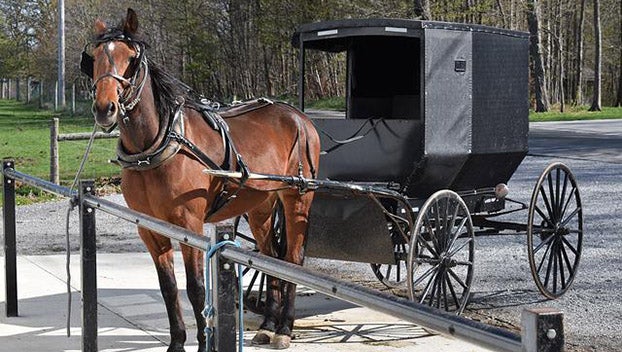Subdivision And Zoning Changes
Published 5:04 pm Thursday, July 28, 2011
CUMBERLAND – Although the overhaul to the subdivision ordinance and changes to the County's zoning ordinance won't officially start until August 1, the Supervisors put their stamp of approval on the documents that lead Cumberland's planning, development, and growth earlier this summer.
The Planning Commission has been working on the overhaul of the ordinances for over a year and the Board of Supervisors finally held a public hearing in June.
Prior to the decision, the planners conducted multiple public workshops and solicited input from design professionals in July and August of last year. Also, there were two joint work sessions held with the Board related to the two ordinances throughout the process.
According to Planning Director Bret Schardein, the Commission worked to gain considerable knowledge related to the goals and policies of the Comprehensive Plan and aligned the new subdivision ordinance with those regulations. Other goals include preserving rural character, encouraging growth in the designated areas of the county, and maintaining the existing visual experience along county highways, he said.
Also, the subdivision addresses private road standards, road maintenance agreements, and provides greater flexibility in subdivision design for developers and those wishing to subdivide property for family members.
“You'll be able to have a private road and they'll be road standards to go by,” said the Planning Commission Chairman, Parker Wheeler, to the Board. “It will be plain and simple…and you'll have a road maintenance agreement so that when you sign the papers it will be clearly stated that you have a private road that you have a road maintenance agreement and it is to be maintained by the residents of this road.”
Once the Board opened the public hearing, there were no speakers.
Supervisor Bobby Oertel, District Five, addressed his one concern related to cluster subdivisions-which are a mandate from the state and must be included in the County's plan for growth.
Oertel was present for both of the work sessions with the Commission but this was the first time his issue was brought to the attention of the Commission and the Board.
He expressed that his problem was with the required open space outlined in the requirements of a cluster development.
Although the acres are actually addressed in the zoning ordinance, it was described to Oertel that cluster subdivisions are a state mandate and must be included in the County's ordinance even in areas that are zoned agriculture.
“What it does say is that in 100 acres you have to set aside 75 percent for open space to remain,” said Oertel about the requirement in A-2 (agricultural) zoning for a cluster development. “This is what I've had a hard time with in the last year since we first started talking about this.”
He continued, “I have a hard time opening up to this because of the vast areas that we have in this county. It brings to mind the question, the American farmer is without a doubt the best steward of our land and I wonder if the farmers were in on this-making this cluster development in A-2?”
Wheeler once again addressed the Board and explained that the reason for the open space is to make sure that specific areas remain “a rural look of the county.”
“So it can remain either agriculture,” he said. “Or it can remain something for the community but it can be an open spaced area. It is a requirement. You have to have that much open space area.”
The Commission's Chairman also noted that a perspective developer could decide to go to another area of the county such as in a residential zoned area and create a cluster development without having to have all of that open space.
“I'm just talking about if there were farmers or landowners to participate in this draft of this ordinance?” Oertel, again, asked.
At that point, Supervisor Bill Osl, District One, addressed Oertel's concern and said, “The cluster development for A-2 was adopted by this Board two years ago and this is reflecting that.”
“The answer to your question is that, 'Yeah there were a couple of farmers involved previously because a couple of them sit on the Board,'” added Osl. “When we redrafted the A-2 because unfortunately…we were mandated by the state to do cluster development and to do planning for cluster development activities.”
According to Wheeler, the cluster development portion of the ordinances being proposed have not been changed from what was originally put in place by the Supervisors two years ago as a requirement by the state.
“In this subdivision ordinance, it is not affecting the A-2 cluster development at all,” said Wheeler to Oertel. “The reason we came up with the cluster in A-2 is that the state mandated that we had to allow cluster developments in A-2 where we did not want them.”
“We would just as soon not have cluster developments in A-2,” added Osl.
After the discussion and when it came time for a vote, the Board approved the subdivision ordinance overhaul but Supervisor Oertel abstained.
Amendments were also made to the County's zoning ordinance in order to align it with the changes in the overhauled subdivision ordinance.
There was also a public hearing held on the amendments to the zoning ordinance and there were no speakers signed up to address the Board.
Changes haven't been made to Cumberland's zoning ordinance in over 20 years and the 2006 Comprehensive Plan called for an update, according to Wheeler.
Although the ordinance changes don't address Cumberland's entire zoning it does address “the most zoned areas, such as residential, agricultural, and roads,” Wheeler continued.
The changes include a comprehensive revision to the zoning district titles, permitted uses by subdivision types, the dimension standards of lots and parcels, and zoning terms, according to Schardein.
No properties in Cumberland were rezoned as part of this process.
Later, the Board unanimously approved the zoning ordinance, which will become effective next month.





